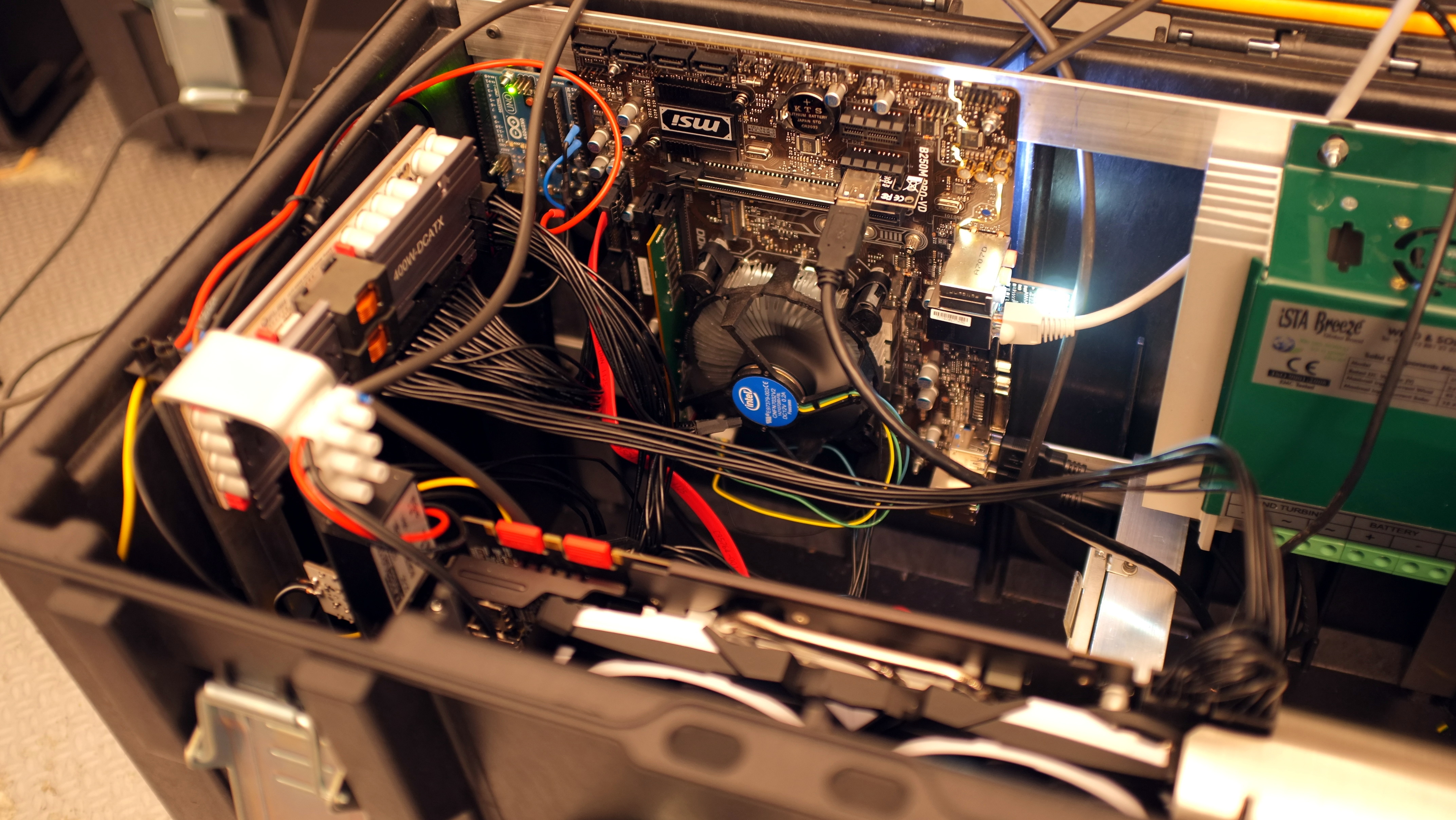Can Clean Energy Solve Cryptocurrencies’ Energy Problem?
Credit to Author: Daniel Oberhaus| Date: Fri, 29 Sep 2017 17:05:53 +0000
For all their purported benefits, cryptocurrencies like Bitcoin and Ethereum have a serious energy problem. At the heart of these cryptocurrencies is an army of computers performing cryptographic hashing algorithms around the clock to verify transactions made on the network, a process known as mining. These computers can range from massive Bitcoin mining farms in rural China to small DIY mining rigs you can run out of your own home, but all of these mining operations are incredibly energy intensive. The Ethereum network, for instance, already uses more energy than the island nation of Cyprus, home to nearly 1.2 million people. The Bitcoin network, on the other hand, is on track to consume more electricity than Denmark by 2020.
Rather than turning cryptocurrencies into another major driver of anthropogenic climate change, however, Julian Oliver wants to harness the power of climate change to mine cryptocurrencies. To this end, the Berlin-based artist recently created a wind-powered mining rig, which is currently mining the anonymity-focused cryptocurrency ZCash in a field somewhere in Europe.
“The most attractive thing about cryptocurrencies is the potent challenge they represent to traditional, state-ordained monetary authorities,” Oliver told me in an email. “Still, their environmental impact of mining on fossil-fueled grids is little better than cash. It occurred to me that I might position symptoms of climate change, in particular wind gusts and storms, as a potential energy for a funding automaton for climate research.”
Oliver’s wind-powered rig consists of a 6-foot wind turbine mounted on a tripod, which is connected to a computer mounted in a weather-proof box. This computer consists of a Mini-ITX motherboard, a single Nvidia GTX 1080 GPU, a 4 GB stick of ram, an Intel i3 CPU, a 250 GB solid state hard drive, an Arduino microcontroller to interface with the wind turbine and a 4G dongle used to connect the computer to the internet.
All told, the materials for the rig cost around $1,700, but Oliver said the price tag could easily be cut in half if he ordered the components for at least 25 rigs at a time.

Importantly, the amount of ZCash the rig is able to mine doesn’t vary with wind speed. Instead, the wind turbine charges two 12 volt, 150 amp-hour batteries so that the rig has a steady power supply.
The demo unit built by Oliver also isn’t exactly a computing powerhouse since it only has one GPU, the component that ultimately determines how much cryptocurrency a rig can mine. Still, Oliver told me his rig computes about 1,100 hashes per second, which generates about $5-6 dollars worth of ZCash per day at current prices.
Oliver said he would be donating all the proceeds from his project to various environmental NGOs, and says he sees sustainable cryptomining as a way to fund climate research and environmental preservation efforts in the future.
“As a funding automaton the rig will donate about $160 a month at today’s rates,” Oliver told me. “This is much more than most single individuals do (or can afford to do).”
While a few hundred bucks isn’t likely to go far in fighting climate change, Oliver said this initial rig was a proof of concept to see if the wind-powered mining rigs are feasible at scale. For example, he calculated that a wind-powered mining farm based on a single large 50kW wind turbine would power 164 GPUs and an onsite server with a directional antenna to connect the farm to the internet. At today’s rates, that would generate about $26,000 worth of ZCash per month and the system would have paid for itself within 5 months.
“You can run a small to medium-sized NGO on that,” Oliver said.
Oliver isn’t the first to explore sustainable solutions to cryptocurrency mining. Other designs for solar-powered and wind-powered mining rigs have cropped up on the internet over the years, and major mining operations in China are often located near major hydro-electric projects to benefit from the cheap and abundant energy created by the dams. Still, Oliver’s project stands apart for its easily replicable (the list of project components and code are all freely available online) and scalable design.
“I’m especially interested in ways to scale this up to crypto farms for implementing highly anonymised passive funding sources for organisations and NGOs that are working hard to make our future suck less,” Oliver said. “Even if the whole crypto-coin universe suffers a killing siege by governments an banks, there’s still great opportunity today.”
Get six of our favorite Motherboard stories every day by signing up for our newsletter.